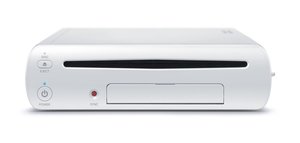Introduction
As lovable as the Wii might have been, and as nice to Nintendo’s pockets as it certainly was, it would be quite a stretch to call it a rider of the bleeding edge of technology. Indeed, lacking even basic Vertex Shaders, relying only on DX7-era Transform and Lighting (TnL), the little console that could was, at most, frown-worthy for the Beyond3D denizen. So why exactly are we talking about the Wii’s successor then? Well, this round there’s a decent chance that the lords of the Wii remote will try being somewhat more daring on the tech front – or at least we hope so!
This article’s goal is to set some reference frames for what we can reasonably expect from Nintendo Wii U graphics capability. For this speculation to be called educated it has be to be grounded in reason; and all sound reasons have a source. Therefore, this article will rely on three bases: the facts, the rumours and what we will call Nintendo’s current approach to hardware. The facts and rumours are self explanatory, the ”Nintendo current approach to hardware” on the other hand requires some definition. With the exception of some non committal claims, such as “1080p graphics! Check that box!”, with all what Nintendo said and shown about Wii U, it has openly set expectations for graphics at a minimum level. No outrageous claim about huge silicon costs, bleeding edge rendering capabilities, living lucid dreams or jacking-up into the matrix. This, coupled with the graphical outputs of the last few Nintendo machines (DS, Wii, 3DS), will colour the speculation of this article.
What is definitely known about Wii U, or Project Café (good choice of codename there, chaps - coffee is one of the main ingredients of greatness!) as it was called before E3 2011, is that it’s coming out in 2012, that it boasts chips from IBM (CPU) and AMD (GPU) and that the centre of its innovation gravity is located on its tablet-like game controller. Beyond that, we gently slip into the land of speculation, an always shifting kaleidoscope of educated guesses coupled with lucky and unlucky shots in the dark. Since that sounds like heaps of fun, we’ll give our own two cents in the following expose…keep that grain of salt close, will you?
The context
First of all, we must consider Nintendo’s current position: in addition to their existing"war chest," they've been raking in the cash from Wii for quite a while, which means they’re sitting on a reasonable stockpile of resources. Let’s add to that Wii U picture the very large budget Nintendo allocated to research and development these last few years ($650/€455 Millions for the fiscal year 2011 and $680/€475 Millions forecasted for fy 2012). Another important element to decrypt Nintendo's state of mind when it comes to hardware is the bet they won when they've been extremely conservative with the Wii and guessed correctly that they can do without HD support and modern graphics capabilities – but it didn't win over third parties, cutting Nintendo from big franchises this generation. Putting these facts together, and factoring in the potential opening provided by Microsoft and Sony who can’t afford a 2012 release as much as Nintendo can for their next generation consoles, it becomes somewhat clear that making the Wii U more muscular than the Wii was in 2006 is not only possible, but also desirable – now we only need to define what more muscular means!
Nintendo’s research and development budget over the last few years
| |
2008 |
2009 |
2010 |
2011 |
2012 (Projected) |
| Budget (Million Yen) |
37,001 |
42,254 |
45,471 |
52,756 |
55,000 |
| Budget (Million Euros) |
320 |
365 |
393 |
456 |
476 |
| Budget (Million Dollars) |
459 |
524 |
564 |
655 |
682 |
The commonly accepted wisdom, possibly based on Nintendo hints, is that what will be Nintendo’s sixth console should end up slightly better than the X360 and the PS3. This is a pretty huge leap compared to the Wii, but not that mind-bogglingly awesome when one looks up just how old that dynamic duo is. Still, if this materializes and if Microsoft and Sony do not jump the gun, it should give them around two years of technical superiority, which will undoubtedly be a nice breath of fresh air. We’ll consider a few possible scenarios for the GPU configuration that may end up powering Wii U, each with pluses and minuses and with varying degrees of likelihood. And no, none of these amounts to “Nintendo activates the GPGPU in Wii and takes over the World. The end”, as disappointing as that may be to some Beyond3D forum old timers.


